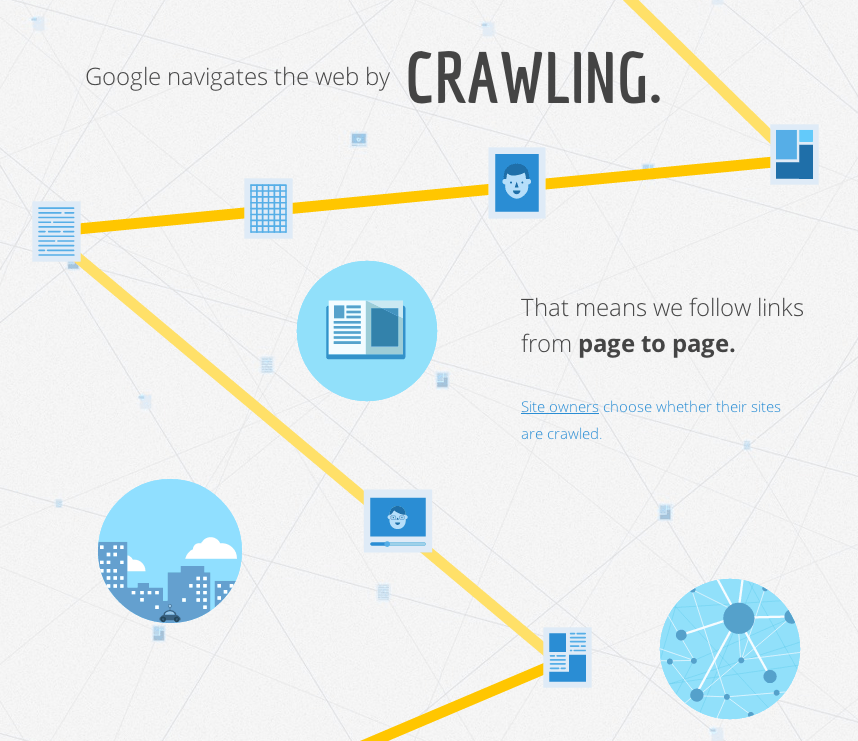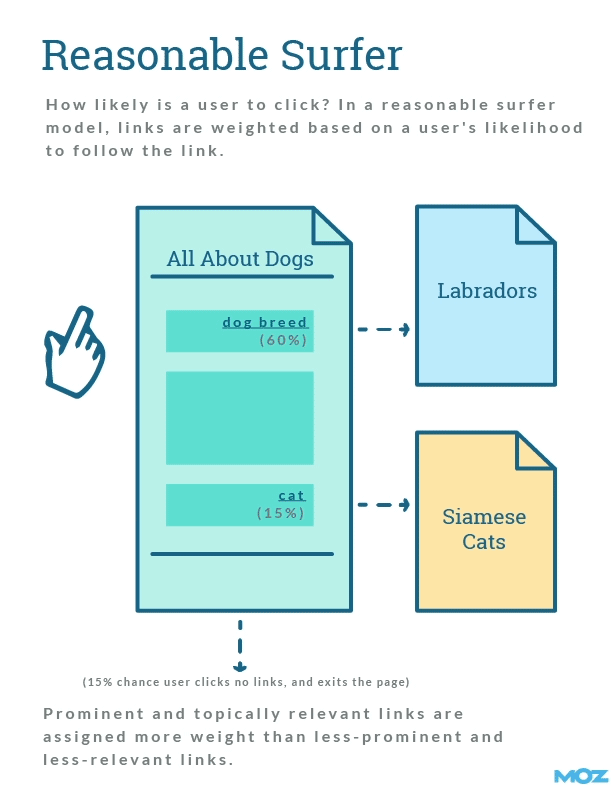Internal links are links that point from one page on your domain to another. They come in all shapes and sizes, but the two most common types of internal links are navigational (your menu, for example) and contextual (links within the content of your website).
Sounds simple, right? Go through your site, hyperlink a few keywords, and boom, you’re done. If only. Like literally everything else in the world, there’s more to it than that, and it begins with understanding what internal links do.
Internal Links Establish a Website’s Hierarchy and Navigation
These typically include links in the header, menu, and footer of your website, and they are more than “just a way” people navigate throughout your site. Internal links help define the path users take throughout your website and how your pieces of content are connected. The best example is an e-commerce website. The homepage links to individual categories, which contain subcategories, which link to specific items. The goal here is to make the content easily accessible to search engines through deliberate navigation.

Internal Links Help Search Engines Crawl a Site
Many tend to think of Google’s gateway to your site as the sitemap. It basically tells Google, “Hey, crawl these pages!” However, in most cases, new content on your site is not being added to the sitemap regularly, especially if you update your content frequently. So how does Google find this new content? Through internal links. Not only will your internal links help Google find the page the next time it crawls your site, but by being strategic and calculated with your internal linking, you can improve the chance of the new page ranking for targeted terms through the distribution of PageRank.

Internal Links Distribute Authority
One of the biggest benefits of internal linking is the distribution of page authority throughout the rest of your site. When defining an internal linking strategy, one of the goals is to funnel authority from pages with a lot of it (i.e., pages with a lot of backlinks) to pages with a little less authority (i.e., the page you’re linking to).
A well-optimized website has lots of pages with external backlinks. These boost the domain authority of your site and help all pages to rank better. But PageRank is a renewable resource. Once a web page effectively uses PageRank for itself it can pass some of that authority along. If you’ve created a page that’s successfully garnered lots of external links, it absolutely makes sense to pass some of that hard-earned PageRank to other SEO targets.
When this authority is distributed via tactical internal linking, it can lead to improved rankings for terms related to the pages to which you’re linking.
To sum up, internal linking is a strategic and necessary aspect of SEO that helps define the architecture of your website and helps spread authority throughout your site. The former is essential for assisting Google and users alike to understand the content of your site. The latter helps establish its relevance.
The Dangers of Internal Linking
So we’ve established that internal linking is great for your SEO. It provides clear direction for the user, helps Google find the pages on your site, and distributes authority throughout your site. But, like all things related to SEO, there are some dangers when misused.
Can You Have Too Many Internal Links? Yes!
The most significant danger associated with internal linking is cannibalizing authority, or diluting the PageRank. Like all things SEO, you need to approach your strategy logically and organically. If you overuse internal linking tactics to the point where every page is littered with links to all other pages on your site (regardless of relevance), you run the risk of cannibalizing ranking authority from your relevant higher-level pages. Not every page should be a high-value landing page. You need to use the traffic and ranking data available to drive your strategy.
Over-Optimization
“Over-optimization” is incredibly easy to do if you dive into the internal linking process without a strategy behind it. Essentially, over-optimization means both keyword stuffing your anchor text in a way that feels unnatural and spammy, and linking so egregiously that their value diminishes.
Thankfully, all of these can be avoided if you just go into internal linking with a user’s mindset. What do they want? What information is most valuable to them? By keeping this at the forefront, you’ll naturally make Google happy and confer the many SEO benefits of internal linking throughout your site.
Internal Linking Best Practices
You don’t need to overthink internal linking. A well-planned website and navigation will typically lead to a fairly well-optimized site architecture, and employing some common sense can put you in a fairly good position to start. That being said, if you’re diving into a new internal linking strategy, there are some best practices you should follow.
Use Anchor Text Strategically
Anchor text can be tricky. Using too many “exact match” anchors can look unnatural and spammy (this is also true of backlinks). At the same time, not enough means you’re just leaving authority on the table. The trick is to use them organically and ensure that the reader understands what they’re getting when they click on the link.

As you can see in the image above, the anchor text is used organically in the sentence to create a relevant internal link back to our blog post on analyzing SERPs for content creation.
An example of bad anchor text? “Learn more.” “Click here.” Or linking to a page on the decline and fall of the Roman Empire using the anchor text “this post.”
Ensure the Content You’re Linking to Is Relevant
If you’re visiting a website browsing sneakers to buy, and you click on a link that says “new men’s sneakers” and you’re taken to a page on women’s casual walking shoes…well, you get the point. This also extends to the relevance of the pages themselves.
Link Deep. Deeeeeeeeeeeep
Orphaned pages suck. If users can’t find the content, neither can Google. Blog posts, resources, and one-off pages that might not have found their way into the main navigation are great for internal linking (provided they’re relevant, of course).
Link Location Matters
Where you place links on the page is important. This is due in part to the “reasonable surfer model,” a Google patent that was filed in 2004 but granted in 2010 and states:
A system generates a model based on feature data relating to different features of a link from a linking document to a linked document and user behavior data relating to navigational actions associated with the link. The system also assigns a rank to a document based on the model.
Bill Slawski of SEO by the Sea has a number of great pieces written on the subject of the reasonable surfer model to help make sense of this, but the main takeaway is “the reasonable surfer model reflects the probability that someone will click on links, based upon the features related to them.” This effectively takes the randomness out of the equation, and considers elements such as “the color, the size, and the styles of fonts, the anchor text used in the links, and a number of other factors,” including link placement.

To recap: relevant, organic links in your content? Great! Dozens of links in your footer to pages linked to nowhere else? Bad! A link to my short film that totally just dropped on Vimeo? I mean, I won’t say no…
Final Thoughts
Formulating an internal linking strategy is not a complicated process, though it does involve sifting through a lot of data and approaching things strategically. The one piece of advice I would give is this: just use common sense. Gone are the days of stuffing as many keywords as you can into your content and links. Focus on the user, and you’ll be just fine.









